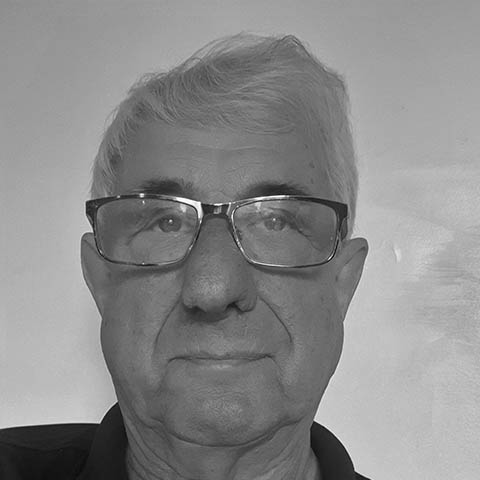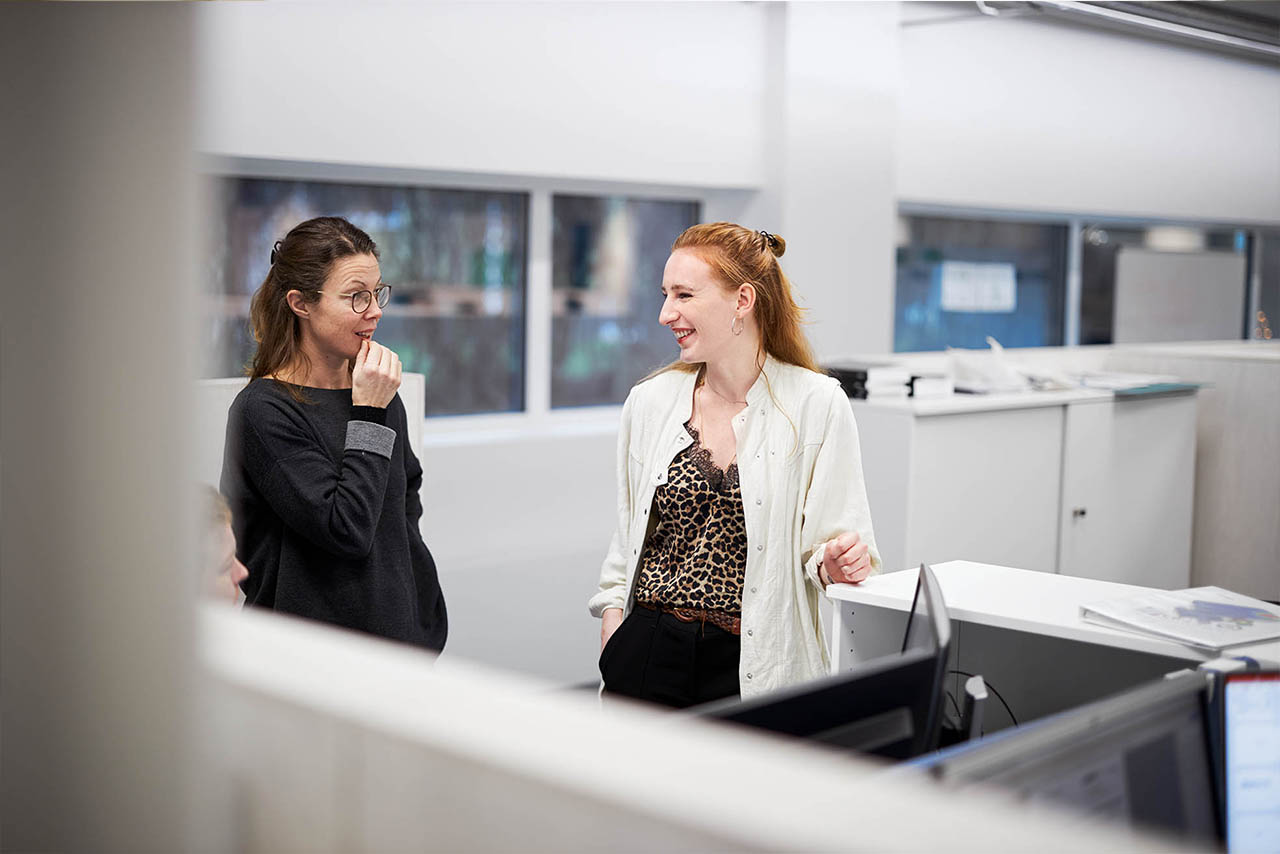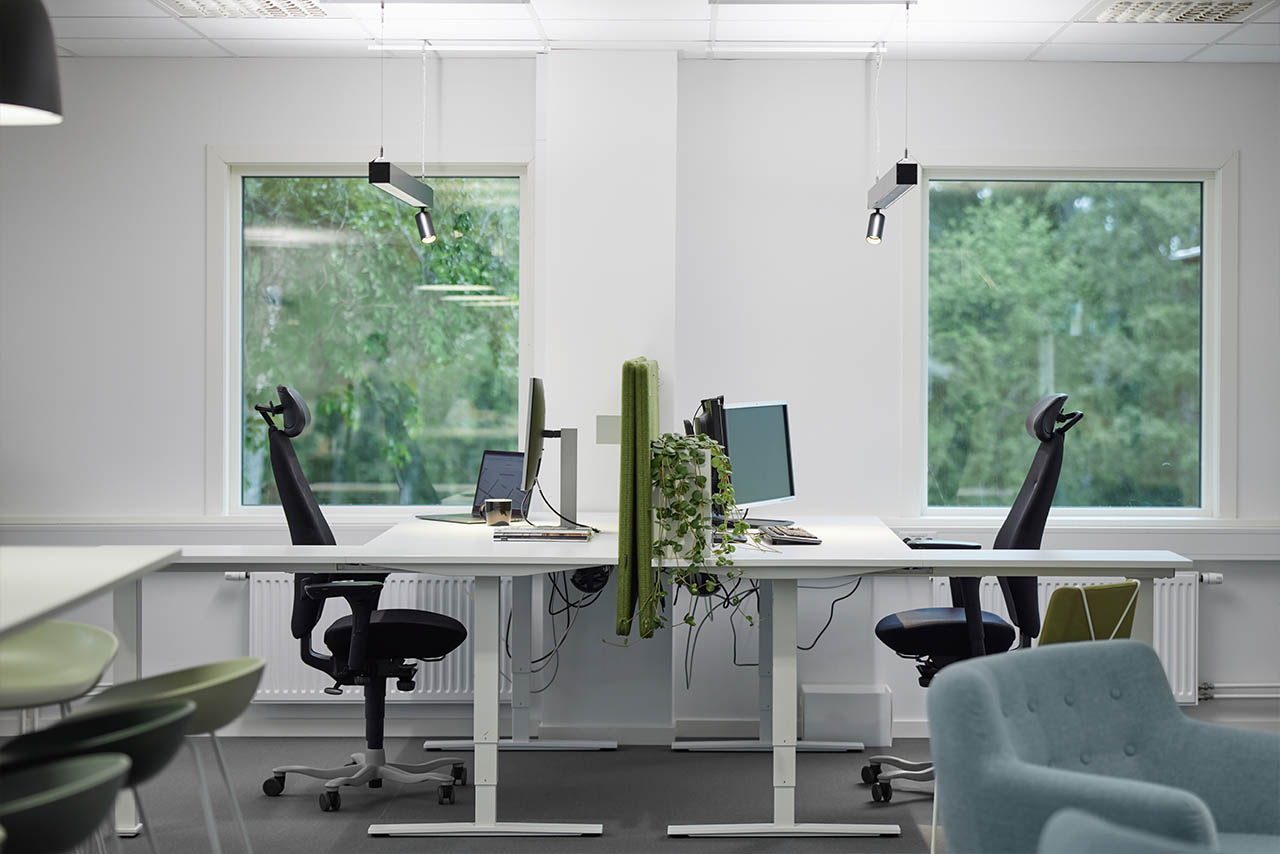
Keep up with standards
This autumn 2021 a revised version of EN 12464-1 is published, which sets requirements for Lighting of indoor work places. We met with Tommy Govén, Senior Designer & Adviser in Light and Lighting, and Klas Rejgård, Standard Specialist at Fagerhult, to learn more.
WHY A EUROPEAN STANDARD IN LIGHTING?
A standard, or a norm, is a document designed to set harmonized lighting requirements for different applications. It is a repeatable way of doing something, built on consensus among the different countries in Europe. This year the standard for lighting of indoor workplaces has been revised and published (EN 12 464-1 2021). We have taken a deeper look into the new updated guiding principles and met some of the people behind the document.
Tommy Govén has a long history of working in the field of lighting design and research focused on its impact on humans and has with his knowledge and passion contributed to the world of standardization. Today he is, among many other things, Project co-ordinator at CEN TC169 in Light and Lighting, responsible for the work behind EN12464-1.
The first standard on Lighting of work places was established in Europe and globally in 2001. The work started already in the early 1990’s, and Tommy Govén entered the first working group of CEN in 1995.
– Before that there were no common standard for Europe, all countries had their different protectionist views on lighting, with their own specifications for luminaires, Tommy Govén remembers. It was a difficult time being an exporting company, being forced to adapt to so many markets and requirements. The aim of the development of this first standard was to achieve a harmonized approach on lighting design for different applications and to harmonize lighting requirements in terms of illuminance, glare limits and other quality parameters in light and lighting. When the standard came into place, it also became easier to develop and export lighting products globally.
 "A well-planned and thought-through lighting is highly beneficial for the people working there." Klas Rejgård, Lighting Standard Specialist Fagerhult
"A well-planned and thought-through lighting is highly beneficial for the people working there." Klas Rejgård, Lighting Standard Specialist Fagerhult
UNITING EUROPE
In 2002 a harmonized European standard was achieved, a breakthrough for the group – and for producing companies. During the years it has been revised twice 2011 and 2021.
Klas Rejgård, Standard specialist at Fagerhults Belysning, explains:
– Normally, you let the standard run for 5 years before revising. Then a request is made to all National Standardization Bodies NSB that are connected, if it is to be revised. Either you can keep it for another 5 years as it is or, if there have been updates - such as the LED shift and new outcome in research – the group can vote for it to be changed. If it is a standard that does not matter at all any more, it can be withdrawn.
– The standard must be applied as a set of requirements for which lighting design are to be met in different applications, says Klas Rejgård. When a reference to a standard is given in a procurement of an application, the minimum requirements given in the standard must be applied.
THE MAJOR CHANGES
So, what are the news in the updated standard? In short the following main areas have been altered in the revised document:
- The schedule of specific lighting requirements has been revised and improved.
- The recommendations given in the tables take user needs more into account.
- The impact of visual and non-visual effects of light on people's performance and well-being
- Requirements for walls, ceilings and cylindrical illuminances are improved and moved from the main text to the tables.
- A new chapter on design considerations gives advice on how to apply the requirements when designing lighting for visual tasks and activities within a space.
- Glare requirements have been clarified for improved usability.
- New informative Annexes have been added.
The revision have focused on the benefits for the humans using the lit-up space. The new standard emphasizes the ambient light and its effect on people working indoors. Research has stated that the brightness of the room affects us positively and enhances our ability to perform over time. It is a great improvement for the users perceived well-being at the work place.
 "There are several ways to meet the requirements, but the design must be put into practice by someone who has knowledge and experience of lighting design in order for it to be well-perceived by people." Tommy Govén, project coordinator CEN/TC169
"There are several ways to meet the requirements, but the design must be put into practice by someone who has knowledge and experience of lighting design in order for it to be well-perceived by people." Tommy Govén, project coordinator CEN/TC169
The standard also contains revised and more comprehensive tables for different visual tasks. This in order to achieve a better and more efficient lighting solution, adapted to human needs within and around the work place. These modifications will impact the way we plan and procure in the future, therefore the new informative annex for better guiding is a great improvement. The annexes are new and give additional guidance for the lighting design and in planning of an improved ambient light in a clear and comprehensible way.
Klas Rejgård develops further;
– There is an entirely different focus on the requirements for the room brightness in the space, he says. A well-planned and thought-through lighting is highly beneficial for the people working there.
–Up to day standards mainly have focused on the horizontal lighting on workplaces, says Tommy Govén. But now the standard also give focus on the brightness of the whole space.
This gives requirements to design for improved illuminances on walls and ceilings. In specific working areas where people works for a longer time during the day, the illuminance requirements has generally been twice as high. Research has now proven that an improved room brightness is beneficial for our well-being, alertness and performance.
Another positive effect of increased ambient light in the space is that it also will reduce the impact of discomfort glare. With the new standard, we now have a method to calculate the ambient light in order to achieve an appropriate room brightness in different applications.
PUT IT INTO PRACTICE
In the updated standard the users’ different needs are better reflected. It also clearly states different requirements for the brightness of the room specified for what type of room it is, such as care unit, office or industry.
– A standard tells you what to achieve but not how to achieve the requirements. In order to give more guidance in the design process, various national guidelines are developed which gives additional recommendations regarding the distribution of lighting in the space and the requirements of energy efficiency, says Klas Rejgård. For example in UK we have the SLL lighting handbook and in Sweden we have “Ljus & Rum”.
Tommy Govén adds:
–Just as Klas says, we want to give an understanding of how to interpret the standard correctly. There are several ways to meet the requirements, but the design must be put into practice by someone who has knowledge and experience of lighting design in order for it to be well-perceived by people.
So, what does our friends in the standard group believe will be the next modification? What do they see in their fortune teller?
– I believe the next important subjects in light and lighting is to consider future research and knowledge within integrative lighting (Human Centric Lighting), as well as new methods for estimating glare and flicker, says Tommy Govén. Today a lot of research is on-going on these subjects. Already today a new EU directive has been launched in September 2021 giving new regulations for flicker (TLA) and stroboscopic effects (SVM). But I also believe, that in the future, you will surely use more luminance based design.
MORE INFORMATION
ISO, which is a global organisation in standardization covering countries and regions outside Europe, have just started the work to revise the standard ISO 8995-1: Lighting of indoor workplaces. This standard will be based on EN 12464-1:2021 and ready for publication in 2024.
FACTS - WHAT IS THE CEN?
The European Committee for Standardization (CEN), is the only recognized European organisation according to Directive 98/34/EC for adoption of European Standards in Light and Lighting.
The standards are created by all interested parties, such as manufacturers or consumers. By standardization, all parties gain increased product safety and quality, as well as lower transaction costs and prices. A European Standard (EN) automatically becomes a national standard and is therefore included in the standards catalogue of CEN's Members (34 countries).
You can also learn more on the standard here on our web.
TEXT MARIA VÅRENIUS
PHOTO PATRIK SVEDBERG, DENNIS BOIJ
Related News

Melanopic lux: lighting for education influenced by human biology
Light is essential in our daily lives, influencing our ability to see, overall well-being and performance. In educational environments, lighting quality can significantly impact students' focus, mood, and energy levels. So, how do we know what is the right amount and quality of light for this setting? Traditionally, light has been measured in lux, a unit of measurement for the intensity of light. It's used to measure how much light falls on a surface or the amount of light in a given space. One lux is the amount of light that falls on a surface that is one square meter in area when one lumen of light is spread out evenly. Recent advancements in research have unveiled the importance of melanopic lux, which goes beyond mere visibility. This measures how effectively light stimulates specific eye cells that regulate crucial non-visual functions such as sleep and alertness. In classrooms and lecture theatres, the melanopic ratio has become vital in lighting design, enabling educators to create spaces that support visual tasks and align with students' biological rhythms. In this article, we explore how lighting solutions can align with our biology, and how this helps to create optimum conditions for educational environments. The science of vision and light The human eye is a remarkable organ designed for high-resolution colour vision within a small area (approximately 2 degrees of the visual field) while relying on peripheral vision for motion detection. This dual-function system, shaped by evolution for survival, continues to influence how we perceive and interact with our surroundings. Our eyes are particularly susceptible to green and yellow light, reflecting our evolutionary adaptation to naturally lit environments. In contrast, blue light, which is chief in modern LED lighting, requires higher intensity to be perceived at the same level. Effective lighting design carefully considers brightness, timing, and distribution to support visual clarity and biological functions like mood and alertness. For example, exposure to bright light in the morning helps regulate circadian rhythms, boosting alertness and mitigating the effects of seasonal darkness. This is particularly important in educational environments, such as schools and universities, where lighting impacts mood, focus, and overall performance. Our Organic Response system provides an innovative solution tailored for these spaces. This smart lighting technology automatically optimises light levels, featuring daylight-responsive sensors and advanced occupancy detection, maintaining a balance between natural and artificial light. Doing so supports visual comfort and reduces energy consumption, making it an ideal choice for creating dynamic, efficient, and student-friendly learning environments. To further support students, well-lit spaces with minimal glare are essential for reducing eye strain and maintaining focus during extended study sessions. Adjusting light intensity and colour temperature for different tasks—such as reading, group discussions, or creative activities—enhances light's visual and non-visual effects. By integrating thoughtful lighting strategies like those offered by Organic Response, educational environments can promote healthier, more productive, and engaging learning experiences. Integrative lighting: Supporting health and well-being. Integrative lighting (also referred to as human-centred lighting) combines visual and non-visual benefits (such as emotional effects) to support biological rhythms and psychological well-being. This approach goes beyond traditional lighting solutions by considering how light impacts circadian rhythms and hormonal balance. Light exposure in the morning is critical for suppressing melatonin (the sleep hormone) and increasing cortisol (the alertness hormone). Proper timing helps align students' natural rhythms with school schedules, which often require a lot of focus. Consistent exposure to bright, cool light early in the day can enhance energy levels and cognitive performance. The melanopic ratio compares the spectral composition of a light source with daylight. Using this information, you can determine its melanopic lighting intensity. This enables the design of lighting setups that precisely meet both visual and biological lighting needs. Lighting recommendations for educational spaces Each learning environment has unique lighting needs. Libraries benefit from direct lighting on the floor, paired with ambient lighting on walls and ceilings. Vertical shelf lighting (200-300 lx) makes it easier to browse titles. Lecture halls, on the other hand, require glare-free, comfortable lighting with flexible control, ideally with pre-programmed scenarios. In auditoriums and classrooms, strong vertical lighting is crucial for clear visual communication, especially over greater distances, enhancing facial expressions and engagement. General lighting recommendations apply to all educational spaces. Our solutions meet industry standards, ensuring reading and writing areas maintain 500 lx for effective visual tasks. Using daylight-responsive sensors for luminaire rows can reduce energy consumption while maximising natural light. The number and arrangement of luminaires should be adjusted based on the room's size and function to ensure consistent illumination. The role of dynamic lighting A Double Dynamic lighting system can be a game-changer in educational environments. It allows for intensity and colour temperature adjustments to match the specific needs of activities, from quiet reading sessions to collaborative group work. Fagerhult's distinct approach to lighting means that our design is human-centric; we integrate scientific insight into light and human psychology, creating environments that support academic performance and well-being. Our focus on energy efficiency also means our advanced control systems optimise light usage while minimising energy consumption, contributing to a building’s sustainability goals. The customisable setting and flexible solutions ensure that educational environments can create tailored lighting profiles for different times of the day or specific learning activities. Long-term benefits of melanopic lighting Melanopic lighting, designed to mimic the natural light spectrum, helps regulate the circadian rhythm, which is essential for maintaining focus, energy, and emotional balance. In classrooms and study areas, proper lighting can reduce eye strain, improve sleep patterns, and enhance mood, which are critical for students' mental health and academic performance. By incorporating lighting that aligns with our biological needs, schools and universities can foster healthier, more productive learning environments,. This is particularly important during the winter months when daylight is limited. Whether through advanced tuneable white light systems, designs that maximise daylight, or energy-efficient solutions, we are dedicated to leading the way in lighting innovation for educational environments, delivering brighter futures—one classroom at a time.
The inspiration behind Nobel Week Lights: ”Light, art and technology intertwined.”
Nobel Week Lights has quickly become a beloved public celebration. During Nobel Week, Stockholm residents flock outdoors to marvel at the spectacular light installations, where contemporary lighting technology meets artistic expression. ”We aim to create a moment of gathering: around light and around something meaningful”, says Lara Szabo Greisman. Nobel Week Lights is a light festival that illuminates Stockholm during the darkest time of the year – a free cultural experience for everyone. Presented by the Nobel Prize Museum, the festival invites international and local artists, designers and students to create light artworks inspired by the Nobel Prize. The installations shed new light on the scientific discoveries, literature and peace efforts of Nobel laureates while offering a fresh perspective on the city. Fagerhult is Principal Partner of Nobel Week Lights 2024, and this year’s edition features 16 different light installations across Stockholm. The artworks can be experienced from 7–15 December, including ”The Wave”, a light installation by the art collective Vertigo, located in front of the Parliament House where visitors can walk right through the luminous wave. The Wave by Vertigo ”Light and art and creativity is incredibly intertwined because these are technologies that are constantly evolving. So part of the fun working with the artists is that they are constantly testing new technologies. And we see these incredible visual results which are based on just pure innovation”, says Lara Szabo Greisman, co-founder and producer of Nobel Week Lights. Lara Lara Szabo Greisman and Leading Lights by Les Ateliers BK The significance of light as a collective force, its ability to encapsulate life and death, joy and sorrow – indeed, the very essence of what it means to be human – makes lighting a powerful medium of artistic expression, she argues: ”The dream for the festival is that this becomes a personal experience for each and every member of the audience. A moment that they remember and cherish . A moment that they think about later and bring forward as their story of connecting with the city.”

